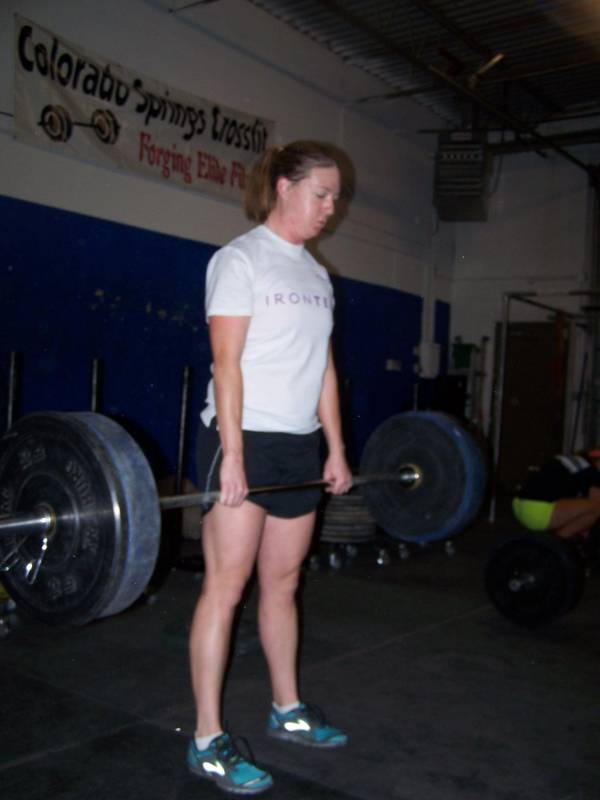EDITOR’S NOTE:
Along with Andrew Read and Narisa Wild, Julie Warren will be sharing her training experiences for upcoming endurance challenges. Follow Julie as she prepares for her next adventure – the Great Wall of China Marathon! Julie’s journals will be posted on Saturdays.
Athlete Journal: Julie Warren, Entry 4 – Training for the Great Wall
Wow, it’s been an insane couple of months! After taking some time off of training to allow injuries to heal, not to mention switching careers and moving half way across the country, I’m finally back in the swing of things with new goals in sight. Let’s face it, as an endurance athlete, having a race on the calendar is what keeps me motivated. Lack of motivation leads to boredom and complacency, and that’s how I end up watching an entire season of Breaking Bad in a weekend and not leaving my couch. Obviously this isn’t so good for the fitness and it’s a gateway drug that will lead me right back to my fat jeans.
To avoid those slumps in my training and fitness, I like to keep big goals on the horizon. Smaller goals are necessary too, but one or two big lofty goals that elicit an “I’m exchanging your Christmas presents for a psychiatric evaluation” response from my mom are what I need to keep my focus and drive. I think The Great Wall of China Marathon fits the bill perfectly. Not many people can say they’ve run across one of the 7 Wonders of the World. So this May, my friends and I will be heading to China and running up and down large sections of the wall, while also running though some of the local countryside. I am beyond excited for this experience, and it poses a really interesting training challenge. This is a fairly intense marathon course, mostly due to the extreme uphill and downhill sections on the wall (course altitude chart can be viewed here). Additionally, according to the event website, the well-prepared runners will finish in 5-6 hours. That’s a lot of time on your feet when you’re used to cranking out a marathon in under 4 hours.
To tackle this challenge, I’m planning to loosely follow the CrossFit Endurance training methodology. I say “loosely” because to be honest, even though I have my certification in CrossFit Endurance, I don’t know that following it to the letter is what’s best for me. I really get a lot of enjoyment out of going for a nice long run, and so the thought of cutting those out of my training plan is depressing. On the flip side, I’ve finally conquered plantar fasciitis after 2 years, and I think less time running long distances will help my running longevity. So I’m aiming for a happy medium. Long runs will happen every other weekend. On a few of the weekends when I’m not running long, I plan to go for long hikes. It won’t necessarily get the heart pounding (barring any wildlife encounters), but it will theoretically help me get used to being on my feet for long periods of time.
Where I think CrossFit Endurance hits the nail on the head is the incorporation of strength work (in this case CrossFit) into the endurance athlete’s training regimen. I can’t speak for everyone, but in the few months I’ve been doing CrossFit religiously, I’ve seen notable improvements in my fitness across the board. My plan is to continue with 4-5 CrossFit workouts per week throughout my training. I really enjoy the workouts and they appear to be producing results, so I’m moving forward with them. In addition, I will be doing 3-4 CrossFit Endurance workouts per week. These workouts will serve the specific purpose of getting faster and more efficient as a runner. Like many distance runners, I settle into a comfortable (see also: slow) pace quite easily. To break that habit and get my turnover speed a little higher, I’m relying on these speed workouts.

So what about hill work? Now that I once again live in Colorado Springs, I am in the perfect hill training area. My personal favorite hill challenge is something called the Manitou Incline (pictured above). It’s a trail that gains just over 2000 vertical feet in just .8mi. It’s essentially an old railroad track that runs up the side of a mountain with grades as steep as 60% in some areas. Perfect training for the Great Wall! I’ve been climbing this every week since I’ve moved back and will continue to do so throughout my training, and perhaps throw it into some of my long runs to simulate the actual race course. Hill work, check.
So as you can see, my training is really going to be a controlled experiment on myself. Thanks to injuries over the past few years I’ve realized that in order to continue to enjoy endurance sports for many years to come, my approach to training needs to change. I think this plan will provide a solid start in a positive direction. I’ve also realized that training is really only part of preparing for this race. In future articles, I’ll keep you posted on how I’m tackling running-induced flexibility/range of motion issues, modifying my nutrition intake, and conquering any speed bumps that are sure to come up during my next four months of training. I’m looking forward to sharing my experiences and lessons learned with you once again!






